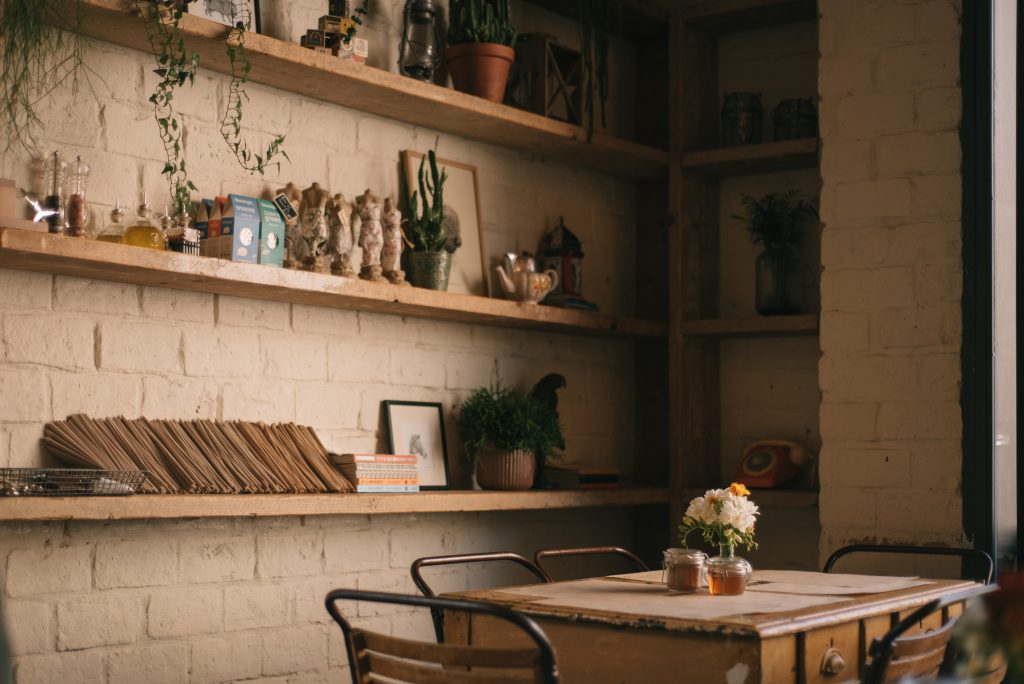What is Revintage?
The history and legacy of our interior spaces have received far smaller attention, both from heritage experts and builders, than one would have expected given the time that we spend in them. Part of the reason may have been that it was long considered to be a woman’s domain, and therefore less deserving of scholarly attention than the outer, male-dominated world. Yet these domains were a reflection both of our own image, and the image we wished to project to the outer world. Indeed, in many European cultures, it was long a custom to have spaces dedicated to either: a kitchen or living room, somewhat hedonistically filled with those items that made us feel relaxed and comfortable, or a more ostentatious, representational space dedicated to receiving the village priest, the mayor, and other worthies. The first type was used throughout the day, the second often went neglected for months on end. But both were equally important in defining who we were and considered ourselves to be.

Yet these representational spaces, dedicated to special occasions and recieveing guests, and other worthies, have received far more attention, both from heritage professionals and art historians, than private interiors and ordinary homes. There is a real danger that we ignore, and let disappear, a unique form of popular European culture. This is particularly true after World War II when a unique set of circumstances in Europe, such as economic, social, cultural shifts, made it possible for people to shape their interiors in a way that differed fundamentally from that of their ancestors. Although this encompassed an integration of prevalent aesthetic trends, it also integrated older traditions and concurrent but not necessarily design-oriented ideas, founded in religious and cultural developments. The end result was a unique, mostly locally diverse, eclecticism founded in tradition and popular culture. Many of these recent historical interiors are in danger of being lost at a rapid pace. From a conglomerate of unique, local styles we appear to have moved to industrial, global unification. In many cases, older interiors are well protected, but not those from the second half of the last century. They remain important not only for art-historical values, but also for socio-cultural investigation, being intrinsically tied to the cultural identities of the cities, communities and individuals connected to them.
The Revintage Project aims to understand the dynamics of 1970s and 1980s European interiors by looking into local case studies, uncovering a network of local stakeholders, and identifying practices of care and destruction that impact a part of our daily life and communicating this to an interested group of learners on VET level. We will be looking into aspects of design, but most of all we focus on recognizability, use, a sense of belonging and cultural continuity. This project is a mapping/quick scan that could prepare for a more extensive collaborative project with multiple partners but with its own usable results. It should help to clarify and define the ‘problem’
For whom is Revintage meant?
We define two target groups.
The primary target group consists of VET education. Existing courses focus in particular on one aspect of the problem mentioned. They are engaged in professionally teaching construction and design skills. On the other hand, there are courses that are concerned with the preservation and restoration of authentic elements from interiors. There is a need for a curriculum that brings both aspects together. However, there is often a lack of knowledge for this. This knowledge is partly available at heritage institutions, such as museums and archives. By paying attention to training in this area, we can contribute to the preservation of post-war interiors, but also to the aspect of sustainability. Too much is assumed that modernization is good, without thinking about the costs and sustainability aspects. Also, consider low-income consumers.
Valuation of one’s own cultural heritage creates an appreciation for each other’s heritage and an understanding of how this can be preserved in a sustainable way in one’s own society and for the future. We emphatically want to use digital resources for this target group. Information about conservation options must be readily available and structured. This applies in the first instance to the teachers, but also to the students.
The secondary target group consists of formal and non-formal professionals in the field of interior preservation and documentation, as well as groups engaged in the sustainable preservation of interiors or influencing public opinion in this area. Professionals often have the knowledge that can be used by the primary target group. In The Netherlands, this group consists of, among others, the Zuiderzeemuseum Enkhuizen, the Cultural Heritage Agency of the Netherlands (Rijksdienst voor het Cultureel erfgoed, RCE) and Het Nieuwe Instituut in Rotterdam.In Portugal, this group consists of, among others, Cortiço e Netos; Their collection is comprised of original industrially produced tiles items manufactured from the 1960s henceforth. The company considers its collection of tiles as historically relevant in the Portuguese azulejo tradition and testimony of Portuguese industrial patrimony. In Malta, this group consists of, among others, educational organizations such as the Faculty of Built Environment (University of Malta), students of the Society for Architecture and Civil Engineering, and several foundations.
By building a bridge between the two target groups, we hope to contribute to responsible, sustainable, and affordable preservation of post-war interiors and raising the quality of VET education for the purpose of valuing Europe’s heritage.
Header photo by Constantin Panagopoulos on Unsplash
